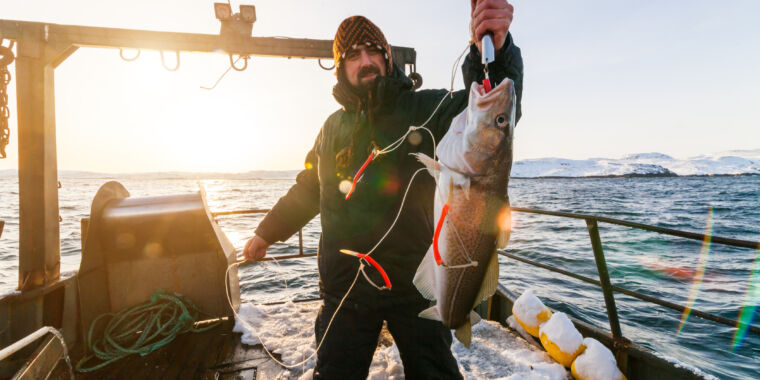
Newly obtained genetic data from the Chinese Center for Disease Control and Prevention (China CDC) links the pandemic coronavirus SARS-CoV-2 to animals—specifically raccoon dogs—at the Huanan Seafood Wholesale Market in Wuhan, where the earliest COVID-19 cases centered, a group of independent scientists told the World Health Organization this week.
The genetic data came from environmental swabs collected at the market by China CDC in January of 2020. The existence of these swabs was previously known, as was the fact that they were positive for SARS-CoV-2 genetic material. But in late January of this year, scientists at China CDC uploaded—and then later removed—additional genetic data from these swabs to a public genetic database called GISAID, the WHO said. That additional data, which had not been previously disclosed, indicates that the SARS-CoV-2-positive swabs also contained genetic material from humans and animals, particularly large amounts of genetic material that closely matches that of raccoon dogs.
Raccoon dogs—foxlike animals whose faces closely resemble those of raccoons—are known to be susceptible to SARS-CoV-2 infection and were known to be sold at the market.
Such close commingling of genetic material from the virus and a susceptible animal at the epicenter of the outbreak provides additional—though still inconclusive—evidence in support of a natural spillover hypothesis instead of the main competing hypothesis of a laboratory biosafety breach, i.e., a “lab leak.” Previous genetic studies had identified two genetic lineages of SARS-CoV-2 in people early in the pandemic, suggesting two separate cross-species jumps into humans.
In a spillover scenario, the virus could have leap-frogged to humans from its reservoir in bats via raccoon dogs, which would be considered an intermediate host. This is how many animal viruses move to humans, particularly coronaviruses related to SARS-CoV-2. After the 2003 SARS outbreak caused by SARS-CoV-1, data suggested that masked palm civets and potentially other wild animals—including a raccoon dog—acted as intermediate hosts at a wild animal market much like the Huanan market. Another coronavirus, MERS-CoV, which causes Middle East respiratory syndrome (MERS), is also known to spread to people via dromedary camels.
Data sleuthing
The newly discovered genetic data from the Huanan market has not yet been made publicly available, and much of what is known is from media reports of the data. The Atlantic was the first to report the existence of the data Thursday.
But the WHO confirmed in a press briefing Friday that it had first learned of the data on Sunday, and on Tuesday, it gathered SAGO, the agency’s Scientific Advisory Group for the Origins of Novel Pathogens. At that meeting, international scientists who were able to download the data before it was removed from GISAID presented their preliminary analysis to the advisory group.
The scientists working on the analysis include Michael Worobey, an evolutionary biologist at the University of Arizona; Kristian Andersen, a virologist at the Scripps Research Institute in California; Edward Holmes, a biologist at the University of Sydney; and Angela Rasmussen, a virologist at the Vaccine and Infectious Disease Organization at the University of Saskatchewan in Canada.
Florence Débarre, a theoretician who specializes in evolutionary biology and works at CNRS, the French national research agency, is credited with the data sleuthing that initially discovered the data on GISAID in early March before it was removed.
According to media reports, the data was taken off of GISAID after the international scientists analyzing the data reached out to China CDC to collaborate.
“The big issue right now is that this data exists and that it is not readily available to the international community. This is first and foremost absolutely critical, not to mention that it should have been made available years earlier,” Maria Van Kerkhove, the WHO’s technical lead on COVID-19, said Friday.
Throughout the investigations into SARS-CoV-2 origins, China has pushed a dubious hypothesis that the virus originated outside its borders entirely, suggesting at one point that it was carried into the Huanan market via imported frozen foods. It has strongly pushed back on suggestions of a possible lab leak and had previously denied the existence of any wild animals in Huanan that could have acted as intermediate hosts.
WHO Director-General Tedros Adhanom Ghebreyesus echoed Van Kerkhove’s frustration, emphasizing that the agency has again pushed China for transparency.
“These data could have—and should have—been shared three years ago,” Tedros said Friday. “We continue to call on China to be transparent in sharing data and to conduct the necessary investigations and share the results. Understanding how the pandemic began remains both a moral and scientific imperative.”








